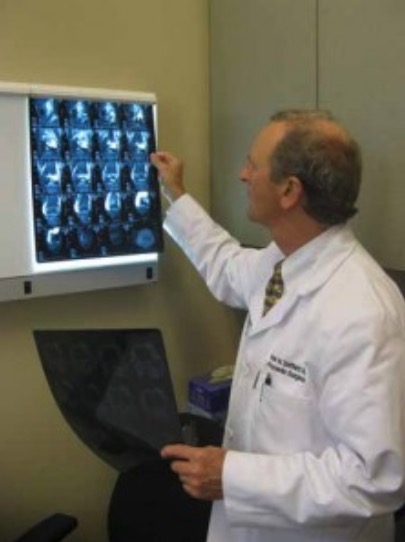Revision Hip Replacement
Understanding Revision Hip Replacement
Joint replacement is one of the most common and successful procedures performed by orthopaedic surgeons, but not every procedure is successful. The goals of a joint replacement are to decrease or eliminate pain from an arthritic joint and improve mobility/joint function. Some joint replacement surgeries are considered unsuccessful because they don’t achieve these goals. There are a variety of reasons that this may occur, many of which can be addressed.
Evaluation is warranted when a joint replacement is not achieving reducing or eliminating pain at the joint. It is important for the doctor to listen to what the patient is experiencing, perform a thorough examination of the joint, and review all x-rays and pertinent medical records associated with the painful joint to try to determine the source of the problem.
Sometimes, pain management is the only treatment. Other times there are issues that can be successfully addressed with revision surgery. Revision surgery involves identifying a particular problem or problems and then correcting these problems surgically. Revision surgery can be very successful if a particular problem is identified that can be safely addressed. If no specific problem is identified, the revision of a painful joint replacement is less likely to be successful.
Additionally, joint replacements (artificial joints) have a defined life span. If one lives long enough, they will wear out and need to be revised. In general, the life expectancy of a joint replacement is longer than the life of the person in which it is being placed.
Revision surgery involves taking out one or all of the original implant parts and replacing them with new parts. During this process the ligaments, bone and tendons are re-evaluated. Revision surgery is more complex and has a higher complication rate so surgeons should only entertain the idea if there is an identifiable problem.
Reasons for a persistently problematic joint replacement may include but are not limited to:
- Incomplete rehabilitation
- Persistent pain
- Stiffness
- Infection
- Instability/Dislocation
- Loosening over time of the implant (early or late)
- Limb length inequality
- Tendon or muscle insufficiency
- Excessive scar tissue
- Other sources of referred pain
Want to make an appointment?
Complete our “Request an Appointment” in our Chat Box on this page. We will contact you about choosing the date and time for your appointment.

